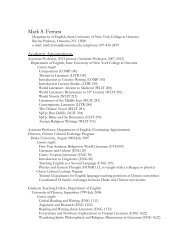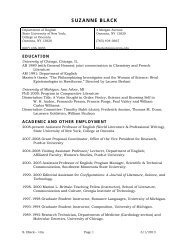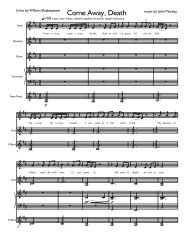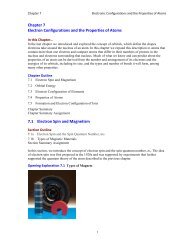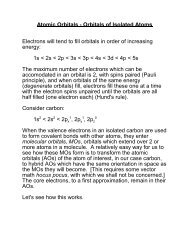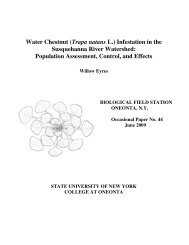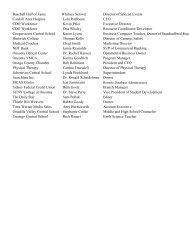quantitative analyses of periphyton biomass and ... - SUNY Oneonta
quantitative analyses of periphyton biomass and ... - SUNY Oneonta
quantitative analyses of periphyton biomass and ... - SUNY Oneonta
Create successful ePaper yourself
Turn your PDF publications into a flip-book with our unique Google optimized e-Paper software.
Monthly <strong>and</strong> Seasonal Average Data for Biomass <strong>and</strong> the Parameters<br />
Biomass monthly averages were calculated from data collected 6 June<br />
1991 to 20 November 1991 <strong>and</strong> from 8 January 1992 to 24 June 1992. The<br />
beginning <strong>and</strong> ending dates <strong>of</strong> each collection (13 total) are shown in<br />
Appendix C. From February 1992 to June 1992, the monthly averages for the<br />
six parameters, total phosphorus (T.P0 4 ), nitrates (N0 3 ), chlorides (CI),<br />
turbidity (TRB), velocity (VEL), <strong>and</strong> water temperature (TMP), were calculated<br />
from 1991 data. The monthly temperature averages for streams 1, 2, 6, <strong>and</strong> 20<br />
were from 1992 data. Biomass <strong>and</strong> the other parameter data were also<br />
calculated seasonally. The collection months were divided into seasons as<br />
follows: summer = June· August, fall = September· November, winter =<br />
February <strong>and</strong> March, <strong>and</strong> spring =April· June.<br />
Data Preparation<br />
The baseline <strong>and</strong> storm event data for the six parameters collected in the<br />
nine tdbutaries <strong>and</strong> the Susquehanna River were recorded in spreadsheet<br />
format using Quattro Pro (Borl<strong>and</strong> International, Inc. 1992). Measurements for<br />
T-P0 4 • N0 3 , <strong>and</strong> CI were then integrated, using Sigma Plot (J<strong>and</strong>el Scientific<br />
1990) to accurately account for the differences in concentrations between<br />
baseline <strong>and</strong> storm event data during each month. By using integration, the<br />
concentrations <strong>of</strong> each parameter could be calculated for days when analysis<br />
<strong>of</strong> the parameters was not performed. The average monthly concentrations,<br />
therefore, include a concentration for every day <strong>of</strong> the sampling month.<br />
Monthly turbidity averages were obtained by averaging the turbidity for<br />
18



